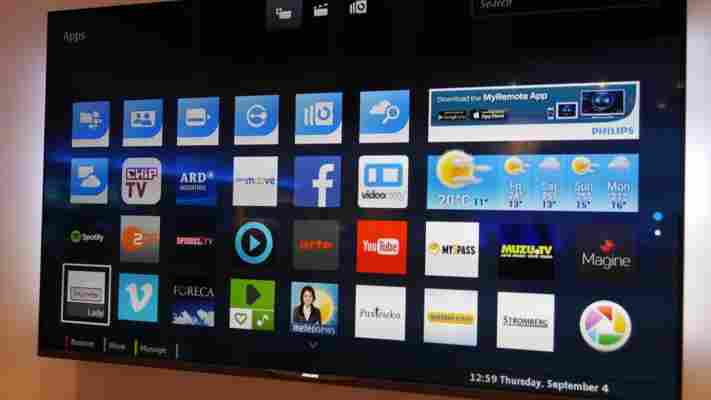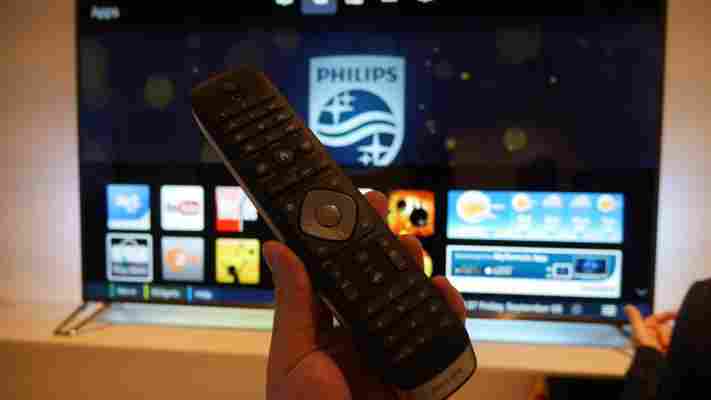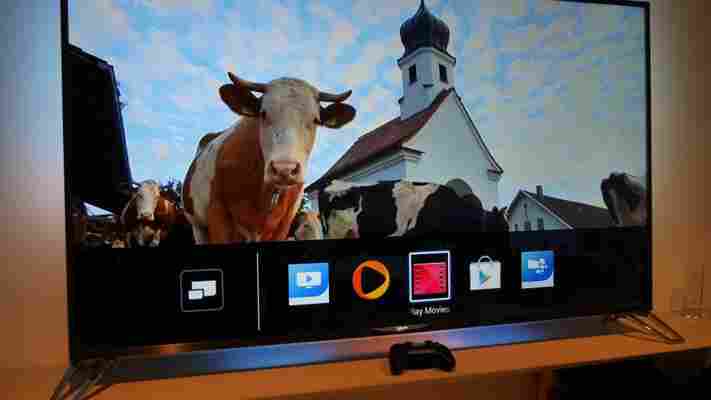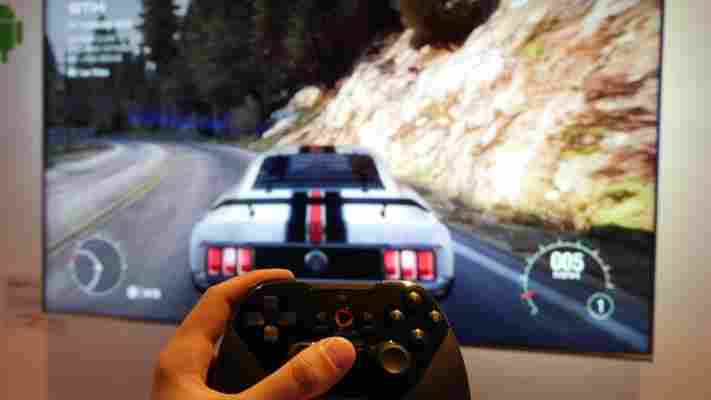Philips 9809 Powered by Android 4K TV review - hands on: Why wait for Android L?
Philips came to this week's IFA show in Berlin with all guns blazing, introducing a c omplete line-up of 4K TVs which represent a series of firsts for the company. The 9800 Powered by Android TV is the flagship 4K set, which combines a UHD resolution and AmbiLight ambient lighting with a brand new smart TV system powered by Google's Android operating system. We got the chance to put one to the test during the show, to see if Philips has finally cracked Smart TV and made set-top boxes like Apple TV or Roku redundant.

Previous Philips TVs lagged behind the competition in terms of streaming services, but that won't be an issue with the Android sets. You should be able to download all your favourite on demand and catch up services directly from the Google Play store, including BBC iPlayer, 4OD, Demand 5 and Netflix . 4K streaming content is supported, as the Android TVs all have HEVC codec support.
With access to Google Play, there are other possibilities too. One enterprising journalist installed a torrent downloader, found a 4K film trailer online and downloaded it to the TV, without having to jump on a computer or transfer the file from another device first.
Each TV will include 1.6GB of internal storage for installing apps, but that won't last long once you start downloading games. Thankfully you can use one of the rear USB ports to attach a flash drive or external hard disk, adding up to 64GB of extra storage. This will also turn the TV into a rudimentary PVR, letting you pause, rewind and record live TV.
Surprinsgly, Philips has included its old Cloud TV app store as well as Google Play. Almost every app contained in Cloud TV is also available from the Play Store, making us wonder why you would ever use the cut-down Cloud TV version rather than a fully featured Android App.

Philips has hidden the default Android interface, replacing it with its own, TV-centric design based on icons. You can customise it to a degree, moving icons, uninstalling unwanted apps and adding widgets for certain installed apps for easy access.
Everything is controlled using the bundled remote control, which builds on the comprehensive remote introduced at IFA two years ago . It retains the QWERTY keyboard on the back for quick text entry and touch-sensitive pointer button on the front, which puts a mouse cursor on the screen when it detects your finger on the button. You can then move around the screen by waving the remote, similar to a Nintendo Wii motion controller. A hexa-core CPU inside the TV provides ample processing power, so Android never felt sluggish when switching between homescreens, loading apps or opening the live TV guide.
The remote now has a microphone built in as well, leting you use voice commands to control the TV. Philips has also added gesture controls, using the intregrated Skype video camera, but we can't see the point; it's fiddly and slower than using the traditional remote.

By itself, Android TV has plenty of features, but Philips has worked with several partners to add extra functionality on top. It's the first TV range to get Spotify Connect built-in, letting you stream music directly to the set with a tap from the Spotify smartphone app.
Philips has added Hue integration, letting you add the company's range of colour-changing light bulbs and accessories into the TV's AmbiLight ambient lighting system. It's a simple setup process, which lets you set how far away each bulb is from the screen to keep them in sync with the TV, and when you've set up your whole room with bulbs the immersion is fantastic; lights change based on what's on screen, almost spilling out of the frame and bringing you closer to the action.
Another highlight is OnLive integration. The cloud-based game streaming service lets you play PC games at full graphics settings over the internet, with high-powered hardware running the games and beaming the video directly to your TV. We tried several titles and were impressed with the low latency; even racing games like Grid 2 felt responsive. Quality will depend on the speed of your internet connection though, with only the fastest connections able to maintain perfect image quality. We noticed quality drop on the show floor, where the connection was being shared by hundreds of devices, to the point that the picture looked more like a pixellated YouTube video than a PC game.
According to Philips you'll be able to plug in any USB joypad to play, or buy one of OnLive's dedicated wireless controllers. You'll also have to subscribe to the service if you want to play.

The Philips Android platform is based on Android 4.2 Jelly Bean, rather than the newer 4.4 KitKat or upcoming Android L . Google's latest OS will include Android TV, a dedicated version of the operating system built for set-top boxes and smart TVs, which will have a custom UI built for the big screen.
It's tough to say whether Philips was sensible in developing its own version of Android, as although we were impressed with its speed, flexibility and ease of use, Android TV will be even simpler still. You also won't be able to upgrade the Philips set to a new version of Android at a later date, meaning apps could eventually refuse to work when Google moves to a newer version of the OS.
Until Android L arrives, however, the Philips Android TV looks like the most comprehensive smart TV system around. It's flexible, fast and potentially has access to every catch-up or on-demand streaming service, so you won't have to worry about missing out on your favorite shows.
Philips plans to launch the entire range of 4K Ultra HD TVs Powered by Android later this year, potentially as soon as October, although prices have yet to be revealed. We're hoping to get at least one model here in the UK, but it remains to be seen whether we'll get the high-end sets on show at IFA. Either way, we're hoping to bring you a full review a little closer to launch.
Your comment